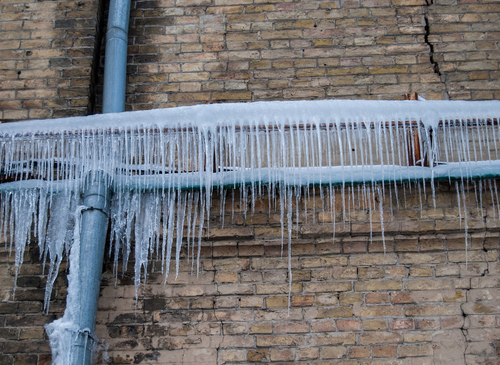Critical Methods for Avoiding Frozen Pipes in Cold Weather
Critical Methods for Avoiding Frozen Pipes in Cold Weather
Blog Article
We have encountered this post involving Helpful Tips to Prevent Frozen Pipes this Winter directly below on the internet and thought it made perfect sense to discuss it with you on my blog.

Winter can damage your plumbing, particularly by freezing pipelines. Right here's how to prevent it from taking place and what to do if it does.
Intro
As temperatures drop, the threat of icy pipelines rises, possibly causing costly repair work and water damage. Understanding exactly how to prevent icy pipelines is vital for property owners in cool climates.
Comprehending Icy Pipelines
What causes pipes to freeze?
Pipes freeze when exposed to temperatures below 32 ° F (0 ° C) for extended durations. As water inside the pipelines freezes, it increases, putting pressure on the pipeline walls and potentially causing them to burst.
Risks and problems
Frozen pipelines can lead to water supply disturbances, building damages, and expensive repair work. Burst pipelines can flood homes and trigger considerable architectural damages.
Indicators of Frozen Piping
Identifying frozen pipelines early can avoid them from breaking.
How to identify icy pipes
Try to find lowered water flow from faucets, unusual odors or sounds from pipelines, and noticeable frost on revealed pipes.
Avoidance Tips
Shielding at risk pipelines
Wrap pipelines in insulation sleeves or utilize heat tape to shield them from freezing temperatures. Concentrate on pipelines in unheated or external areas of the home.
Home heating techniques
Keep indoor spaces adequately heated, particularly locations with plumbing. Open cabinet doors to allow warm air to circulate around pipes under sinks.
Protecting Exterior Pipes
Garden hose pipes and outdoor taps
Detach and drain yard pipes before winter. Set up frost-proof faucets or cover exterior faucets with shielded caps.
What to Do If Your Pipes Freeze
Immediate actions to take
If you believe icy pipes, keep faucets open to alleviate pressure as the ice thaws. Make use of a hairdryer or towels soaked in hot water to thaw pipes gradually.
Long-Term Solutions
Structural modifications
Take into consideration rerouting pipes far from outside wall surfaces or unheated areas. Add additional insulation to attic rooms, cellars, and crawl spaces.
Updating insulation
Invest in premium insulation for pipelines, attic rooms, and wall surfaces. Correct insulation aids keep regular temperature levels and decreases the danger of frozen pipes.
Final thought
Preventing icy pipes needs aggressive steps and quick reactions. By comprehending the causes, indications, and preventive measures, house owners can secure their plumbing during winter.
5 Ways to Prevent Frozen Pipes
Drain Outdoor Faucets and Disconnect Hoses
First, close the shut-off valve that controls the flow of water in the pipe to your outdoor faucet. Then, head outside to disconnect and drain your hose and open the outdoor faucet to allow the water to completely drain out of the line. Turn off the faucet when done. Finally, head back to the shut-off valve and drain the remaining water inside the pipe into a bucket or container. Additionally, if you have a home irrigation system, you should consider hiring an expert to clear the system of water each year.
Insulate Pipes
One of the best and most cost-effective methods for preventing frozen water pipes is to wrap your pipes with insulation. This is especially important for areas in your home that aren’t exposed to heat, such as an attic. We suggest using foam sleeves, which can typically be found at your local hardware store.
Keep Heat Running at 65
Your pipes are located inside your walls, and the temperature there is much colder than the rest of the house. To prevent your pipes from freezing, The Insurance Information Institute suggests that you keep your home heated to at least 65 degrees, even when traveling. You may want to invest in smart devices that can keep an eye on the temperature in your home while you’re away.
Leave Water Dripping
Moving water — even a small trickle — can prevent ice from forming inside your pipes. When freezing temps are imminent, start a drip of water from all faucets that serve exposed pipes. Leaving a few faucets running will also help relieve pressure inside the pipes and help prevent a rupture if the water inside freezes.
Open Cupboard Doors
Warm your kitchen and bathroom pipes by opening cupboards and vanities. You should also leave your interior doors ajar to help warm air circulate evenly throughout your home.

I was made aware of that article on Preventing and dealing with frozen pipes through an associate on a different web page. Sharing is nice. You never know, you might be doing someone a favor. Thank you so much for your time spent reading it.
Call Today Report this page